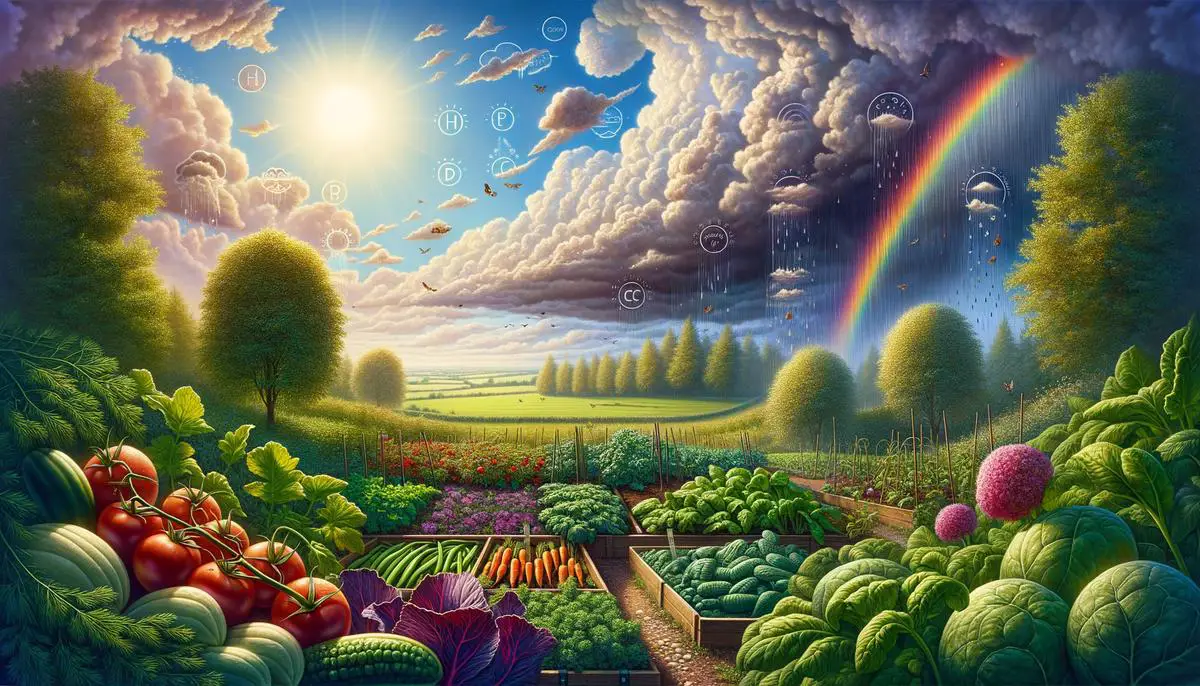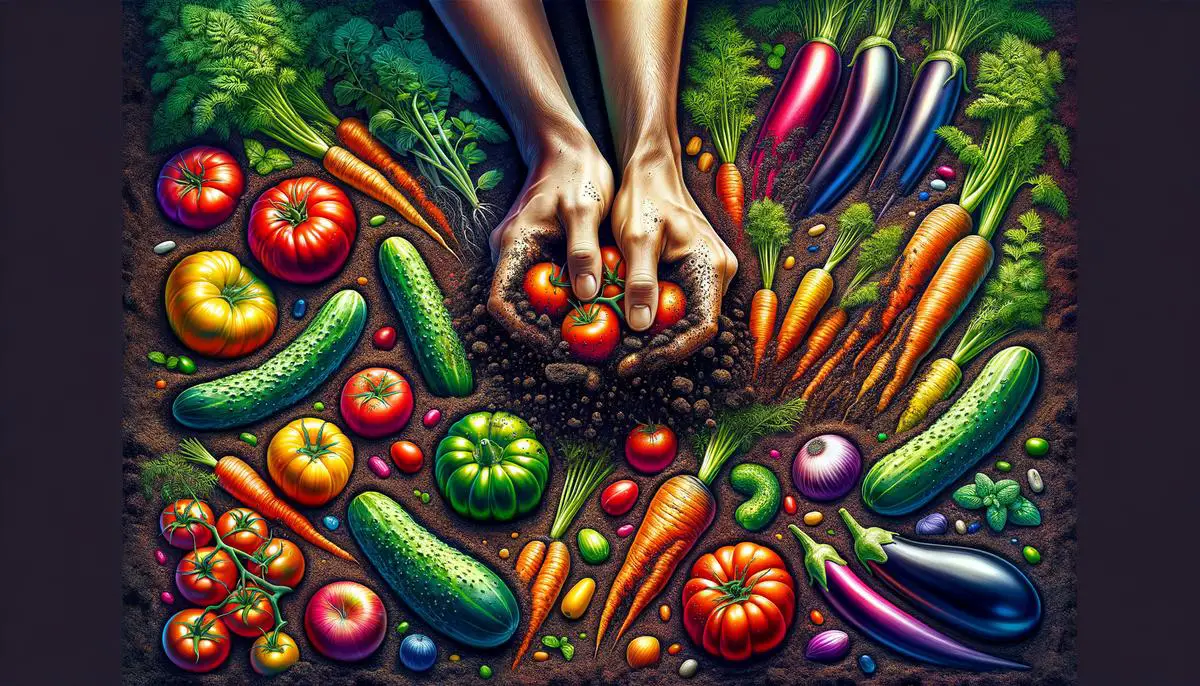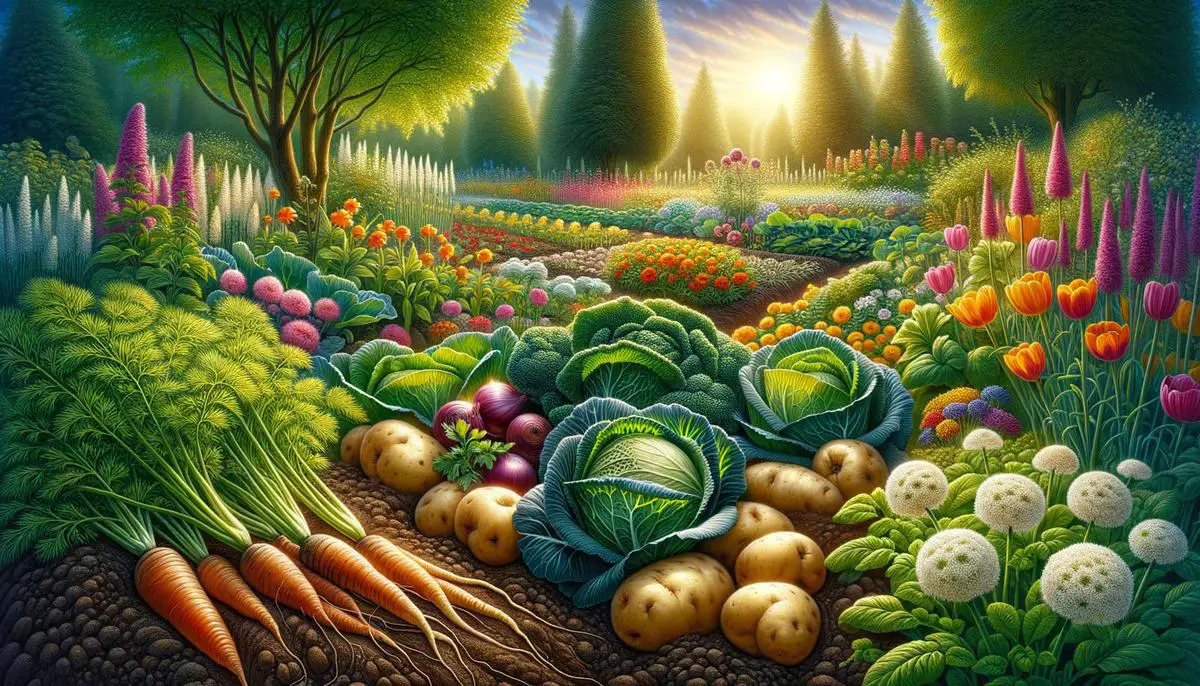Embarking on an exploration of the UK’s climate, we aim to uncover the secrets behind its ability to foster a diverse array of veggies. With a climate that does wonders for the soil and seasonal cycles that encourage growth, this article sheds light on how these elements come together to support a vibrant gardening scene. Prepare to uncover the reasons why this little island’s weather has gardeners everywhere tipping their hats in gratitude.
Understanding UK Climate Zones
Alright team, gear up for a magical mystery tour of the UK’s garden extravaganza – and nope, we’re not talking about the latest rock band hitting the charts, but the smashing weather that makes Blighty a top-notch spot for growing a mix of veggies. So, why does this little island have the green-fingered gods smiling down in favour? Let’s dig in, without getting our hands too dirty.
First off, let’s chat about that British weather – it’s like the moody bass player of the band, unpredictable but absolutely crucial to the vibe. The UK is parked in a sweet spot where it gets plenty of rain, thanks to its primo seat next to the Atlantic Ocean. This isn’t just any old rain; it’s the lifeblood for the soil, giving it the oomph it needs to turn seeds into your Sunday roast’s best mates.
But wait, there’s more. The UK’s weather is as varied as a pick ‘n’ mix sweet shop. You’ve got mild winters, thanks to the Gulf Stream, a warm ocean current that’s like the roadie making sure the show goes on. This means that when other places are getting a frosty reception, the UK’s soil is ready to embrace new life earlier and keep the party going longer.
Summer in the UK is like that chilled-out, festival-going friend who never gets too hot under the collar. The moderately warm summer days, with just enough sunshine and a gentle breeze, make it prime time for growing a smorgasbord of veggies without them getting scorched or stressed out. It’s the perfect balance – not too hot, not too cold, just right for everything from crispy lettuces to plump tomatoes to get their groove on.
The plot thickens with the UK’s secret weapon – its seasons. Four distinct seasons mean the veggie growing calendar is always on the move, shaking things up. Spring whispers ‘go’ to leafy greens and root veggies, summer is a high-five for beans and salads, autumn rolls out the red carpet for squashes, and even in winter, the show’s not over – hardy veggies keep the tunes spinning. This variety act means there’s always something fresh and seasonal to throw in your stew or salad, keeping meals as exciting as a surprise encore at a concert.
And let’s not forget those cloud cover encores, folks. The cloudiness that might bum out your beach plans is a godsend for veggies, acting like nature’s own sunscreen, preventing the harsh sun from bullying delicate leaves. Plus, it keeps the soil from drying out faster than a festival beer tent, meaning less watering woes.
To wrap this jam session up, the UK’s climate is like the ultimate backing band for a veggie concert – it provides the perfect conditions for a diverse playlist of veggies to take the stage, thrive, and keep the crowd cheering for more. From rain showers that encore just when you thought the show was over, to the moderate temps and cloud cover keeping everyone cool, it’s clear – the UK’s weather is the unsung hero making sure the veg patch is always ready for a headliner. So, next time you’re munching on a crunchy carrot or a buttery spud, remember the quirky British weather playing its tune in the background, making it all possible. Rock on, veggie lovers, rock on.

Spring Planting Madness
Alright green thumbs and wannabe gardeners, buckle up! It’s time to talk about the very moment you can roll up your sleeves, dive into the soil, and kick off your very own veggie rave right in your backyard. No more musing over whether it’s too chilly or too damp outside to start planting. Let’s decode the mystery of the optimum veggie planting time this spring, shall we?
First thing’s first: Not every veggie on the block shows up fashionably late to the party. There’s a whole lineup of early birds just waiting for their cue to hit the ground planting. We’re talking about those hardy souls, the vegetables that scoff at the occasional cold snap. Lettuce, peas, and spinach – these are the ones ready to jump into the chilly spring soil almost as soon as the frost decides to pack its bags. For most parts of the UK, this curtain-raiser typically happens around March. Why then, you ask? Because it’s that sweet spot when the soil begins to whisper, “Alright, let’s get this garden party started!” to anyone listening.
Now, don’t get too excited and throw all your seeds into the mix just yet. Patience is a virtue, especially in gardening. There’s a second wave of veggie superstars that prefer making their entrance when the soil is as warm as a snug blanket on a chilly evening. These include the likes of tomatoes, cucumbers, and sweetcorn. You wouldn’t want to rush these divas; they prefer a grand entrance when the risk of frost is more a tale of the past than a possible headline for tomorrow. Biding your time until late April or early May for these warmth-loving veggies will have you avoiding heartbreak over frozen sprouts.
Monitoring soil temperature isn’t just for the pros. It’s your secret weapon. A simple touch test or, for the gadget lovers, a soil thermometer can be your guide. When the soil feels like it’s shrugged off the winter chill, it’s showtime for round two of planting.
Remember, gardening isn’t about sticking to a rigid schedule. It’s more like jazz – a bit improvisational within a set rhythm. Keep an eye on the local weather forecasts because Mother Nature loves a good plot twist. A sudden cold snap or an unseasonably warm spell could mean adjustments on your part.
In wrapping up, your veggie planting party’s kickoff hinges on reading the room—or, in this case, the garden. Early spring welcomes the hardy veggies, while late spring is perfect for those that thrive in warmth. Getting your timing right means you’ll be hosting the veggie equivalent of Glastonbury right in your plot. And who doesn’t want a backstage pass to that show? Get your gloves ready, gardeners. It’s almost showtime.

Summer’s Bounty: Harvest Time Highlights
Spring in the UK isn’t just about daffodils popping up or the odd burst of sunshine prompting premature short-wearing. It’s the clarion call for all you budding gardeners to dig out those gloves and get planting. But hold your horses – it’s not a free-for-all. Timing is everything when it comes to setting the stage for a summer of veggie abundance.
First off, if you’re keen to get a jump on the gardening game, there are a few early birds that are practically begging to be planted as soon as spring dares to show its face. Lettuce, peas, and spinach aren’t just for salads; they’re the hardy front-runners in the race to your dinner plate. These green champs are like the opening acts at a festival – setting the vibe but totally okay with the chill of early spring mornings. Why? Because they’re cool with the cold. Literally, they can handle it, giving you a head start on that harvest festival vibe in your own backyard.
But why early spring for these plants? It’s all about taking advantage of the cool, damp soil, which these veggies lap up like a good British cuppa. Lettuce, peas, and spinach are basically the plant kingdom’s version of the early bird catching the worm. Get them in the ground while the air’s still got a nip in it, and they’ll reward you by being first in line for the summer veg parade.
Now, just when you’re feeling smug about your early plantings, it’s time to pivot to the divas of the vegetable world: tomatoes, cucumbers, and sweetcorn. These sun worshippers are the festival headliners, waiting backstage (or under glass) for their moment in the spotlight. Why the wait? Frost, my friends. A single chilly night can turn these prima donnas into a veggie tragedy. So, patience is key. Let the soil warm up like a sunbather soaking up rays, and then – only then – is it showtime for these warm-loving veggies.
You might think, “Right, got it. Plant early birds early, divas later.” But here’s where the British weather throws a curveball – it’s as predictable as a plot twist in a soap opera. Monitoring soil temperature isn’t just for the weather geeks; it’s crucial for any gardener dreaming of a bountiful harvest. A soil thermometer isn’t just a gadget; it’s your ticket to gardening superstardom.
This gardening gig demands flexibility. Think of yourself as the conductor of an orchestra where the musicians show up according to the weather. Too cold, and the warm lovers are no-shows. Too wet, and the early birds might take a dive. It’s a dance, a delicate balance that asks for your vigilance and a willingness to adapt.
Wrapping it all up, timing isn’t just a suggestion; it’s the heartbeat of a successful veggie garden in spring. Get to know the needs of your green performers, watch the weather like a hawk, and your garden will be the stage for a summer harvest festival that’ll make you the envy of the neighborhood. Just remember, in the world of gardening, timing is not just a suggestion, it’s everything.

Autumn to Winter: Preserving Your Harvest
As we’re all about keeping that summer veggie vibe lit throughout the darker months, let’s dive straight into the heart of extending the season. You’ve got your early risers, your lettuce, peas, and spinach, already snug in their beds, but what about when the sun starts playing hard to get? That’s where the genius of a greenhouse or polytunnel waltzes in. These sunny side shelters are like VIP lounges for your veggies, giving them the warmth and light they crave, even as the weather outside does its best British impression of gloom.
Now, you might be thinking, “but I’ve not got the space or the coin for a full-on greenhouse!” No worries. There’s a back-alley trick that’ll get your veggies vibing well into the when’s-the-sun-coming-back season: cloches and cold frames. Picture them as mini greenhouses, cozy enough to tuck into any nook or cranny of your garden. They’re like the unsung heroes, battling the chill so your sweetcorn doesn’t have to. Plus, they’re a doddle to DIY, meaning you can keep your veg growing without having to splash out.
But here’s the kicker, the real secret sauce to having fresh veggies when the skies are more grey than blue: succession planting. It’s like having a relay team of veggies. Once the early birds have had their moment in the sun, boom, you bring in the next squad. Keep your greens rotating, and you’ll never hit a dull moment on your plate. It’s all about the timing – plant a bit now, a bit later, and keep that cycle spinning. This way, you’re not putting all your salad in one basket, waiting for everything to grow at once.
Let’s not forget our underground allies in this quest for year-round freshness. Root veggies are the unsung heroes when the cold comes knocking. Carrots, beets, and even some cheeky parsnips love a bit of a chill. So, when you’re feeling the nip in the air, these are the mates to get acquainted with. They’re like the hardy folk at the party, sticking it out till the very end, no matter how chilly it gets.
And for the pièce de résistance, why not consider an indoor veg garden? No, you don’t need a magical touch, just a sunny windowsill and you’re golden. Herbs, microgreens, even some cheeky chilli plants can thrive indoors. It’s like having a little piece of summer, right there on your windowsill, ready to banish the gloom with a sprinkle of green.
So there you have it, a foolproof plan to keep your veg garden popping, even when the sun decides to pull a disappearing act. From greenhouses to the humble cloche, succession planting to root veg heroes, and not forgetting the indoor green scene – it’s all doable. It’s your move now, to keep that summer glow in the veg world, proving that a little British weather can’t dampen our spirits or our plates. Keep it green, folks, and remember, where there’s a will, there’s always a way to keep that garden growing.

As the curtains close on our exploration, it’s clear that the UK’s climate, with its mild quirks and seasonal embellishments, plays the lead role in the gardening theatre. This unique blend of rain, moderate temperatures, and well-timed sunshine not only sets the stage but also ensures a continuous performance from a variety of veggies. The real takeaway is acknowledging the robust character of British weather, an unsung hero that empowers even the most novice gardeners to cultivate a green thumb. Let’s keep our gardens thriving, embracing every drop of rain and ray of sunshine as the precious resources they are, fostering life in our backyards one season at a time.
